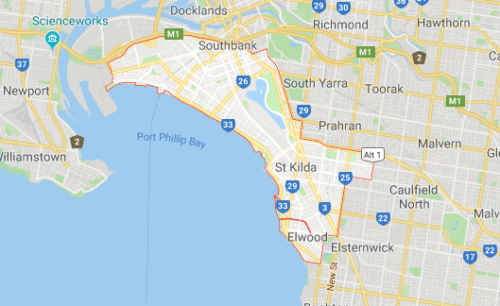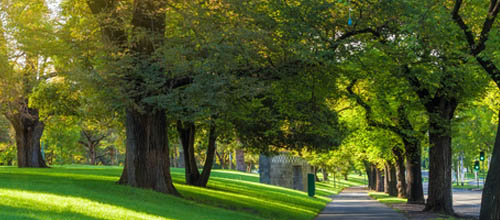Rules and regulations for pruning and removing trees on private properties vary wildly between councils but are essential to understand in order to avoid fines, to follow the law and to best preserve the local ecosystem. Despite the vast discrepancies in rules, the councils use almost identical terminology which can, on the surface, appear to align with neighbouring municipalities. Terms like ‘significant tree’ and ‘trunk circumference’ are the foundation of many of these local laws, though each council have their own perspective on what classifies a significant tree and where to measure the circumference of a tree’s trunk. For many, the confusing nature of these rules and the time needed to organise a tree specialist to assess and manage their private trees is enough to put them off the idea altogether. However, the risks associated with neglecting private trees are great. Without regular trimming, pruning and maintenance, trees can quickly deteriorate in health and become a danger to residents, a huge financial burden to property owners and cause harm to the surrounding environment.
That’s why we’ve worked hard to simplify the process for you, making it easier than ever to follow the laws, care for your healthy trees, remove the damaged trees and improve the value of your property. This article outlines the relevant local and state regulations for any tree works you wish to carry out on private property throughout the Port Phillip Council. Our 24/7 online portal means you can start the process of caring for your trees at a time that suits you. Our local, experienced arborists can be contacted for any further information or for guidance on navigating the relevant regulations and permits for trimming, lopping or clearing your private trees.
The City of Port Philip Council includes:
- Albert Park,
- Balaclava,
- Elwood,
- Melbourne (part),
- Middle Park,
- Port Melbourne (part),
- Ripponlea,
- South Melbourne
- St Kilda
- Windsor (part
Tree Removal and Pruning Regulations
Pruning, removing, trimming or lopping any private trees within the Port Phillip Council region requires a permit if that tree is classified as ‘significant’.
Significant Tree: The Port Phillip Council define a Significant Tree as any tree that has a trunk circumference of 150 centimetres or more when measured one metre above the base. For multi-stemmed trees, the circumference is measured around the exterior of all stems.
Significant Tree Permit
A Significant Tree Permit is needed to carry out any work on trees that fall into this category. This permit can also be applied for online, where you will need to register, fill out your details and pay the applicable fees.
Along with a completed application form and relevant fees, applications must include:
- A site plan or drawing to clarify the tree location,
- Detailed documentation, including photographs or diagrams, outlining the proposed extent of pruning or removal,
- An Arborist report: an objective assessment of the tree by an experienced Arborist,
- A building report: If the tree is a risk to property, a report by a Building Engineer, and
- Consent of the Body Corporate Manager or Committee of Management, if applicable.
The Port Phillip Council charge separate fees for the application and for the permit itself.
- To apply for a Pruning Permit, the cost is $69.
- To apply for a Removal Permit, the cost is $175.
- If accepted, the Permit itself costs an additional $69.
Exemptions
The council provides a number of exemptions that allow residents to prune significant trees without a permit if the tree is obstructing footpaths or roads. If you meet one of the following exemptions and elect to have your significant tree trimmed without a permit, you must take photos prior to conducting treeworks that prove you have met one of the exemptions listed below. This photographic evidence will safeguard you against any fines or accusations of misconduct.
A permit is not needed for the purposes of pruning a significant tree that overhangs a footpath or road up to a height of 2.1 metres. Nor is a permit needed in cases where a significant tree overhangs a road such that it:
- Obstructs the view between vehicles at an intersection; or
- Obstructs the view between vehicles and pedestrians; or
- Obstructs any Council assets including drains; or
- Obscures a traffic control item from an approaching vehicle or pedestrian; or
- Obscures street lighting; or
- Constitutes a danger to vehicles or pedestrians or compromises the safe and convenient use of the road.
Planning Scheme
The aforementioned local laws and permits work in conjunction with state and local planning schemes. The council bylaws state that:
“For the avoidance of doubt, the requirement to obtain a permit under this Local Law is additional to any requirement to obtain any necessary planning permission under the Planning Scheme.”
It is therefore important that you also familiarise yourself with any relevant planning schemes, ordinances and overlays that may apply to your property. The Victorian Environmental, Land, Water and Planning website provides an interactive map of the Port Phillip Planning Scheme that will show the planning controls and zones that affect your local area.
Each ordinance will specify the associated restrictions and requirements, the most stringent of these is the Vegetation Protection Overlay (VPO). Trees within this zone require a permit to remove, lop or prune.
For further information on acquiring permits, understanding the restrictions that apply to your property, or to begin you next treeworks, contact us today.
Arborist Insights
Our tree specialists aren’t just removalists, they’re nature lovers who want to help preserve the local environment as much as possible. Trimming excess foliage and lopping overweight branches is often all that it takes to keep your trees healthy and prevent them from becoming a public hazard.
“You don’t want to take a tree out if you don’t have to obviously,” says one of our local experts, “although we remove trees, we don’t just go in there and say ‘OK now that’s got to go,’ if it’s a nice tree, you try and keep the tree alive.”
While preserving trees is a priority of ours, cutting down dangerous trees and extracting dead trees is an important part of keeping the community safe and allowing new vegetation to prosper.
Sometimes, this can be a fairly straightforward process for our highly experienced arborists:
“Depending on the property, depending on the size of the tree, yeah we can place it where we like – if you’ve got the space there,” says our lead arborist.
Sometimes though, it’s not so simple:
“If it’s close to a house or in between a fence and a house then you’ve got to climb it and piece it off and lower it down.”
Whatever the conditions though, our team are equipped for it. With our $10 Million insurance safeguard on every job, our top of the line equipment and our highly trained and experienced teams, you can rest assured that you are getting the best tree service available:
“It’s a national brand, it’s a big brand and there are a lot of Jim’s vehicles going around; whether it be trees or plumbing or carpentry, the name’s out there,” says our local arborist, “people respect that, they presume they’re going to get a better service – which they do!”
Cutting to the Chase
Caring for your private trees requires regular pruning, trimming and maintenance, while the removal of sick or damaged trees is essential to the preservation of the local ecosystem and the safety of the community. However, performing these duties within the local and state regulations and planning schemes can be confusing, time consuming and expensive. Even with all the information simplified in this article, applying for permits and knowing which permits to apply for is needlessly complicated. That’s why we at Jim’s are on-call and ready to talk you through the process. For help with permits and applications, or for advice on maintaining or removing your trees, contact us today.




